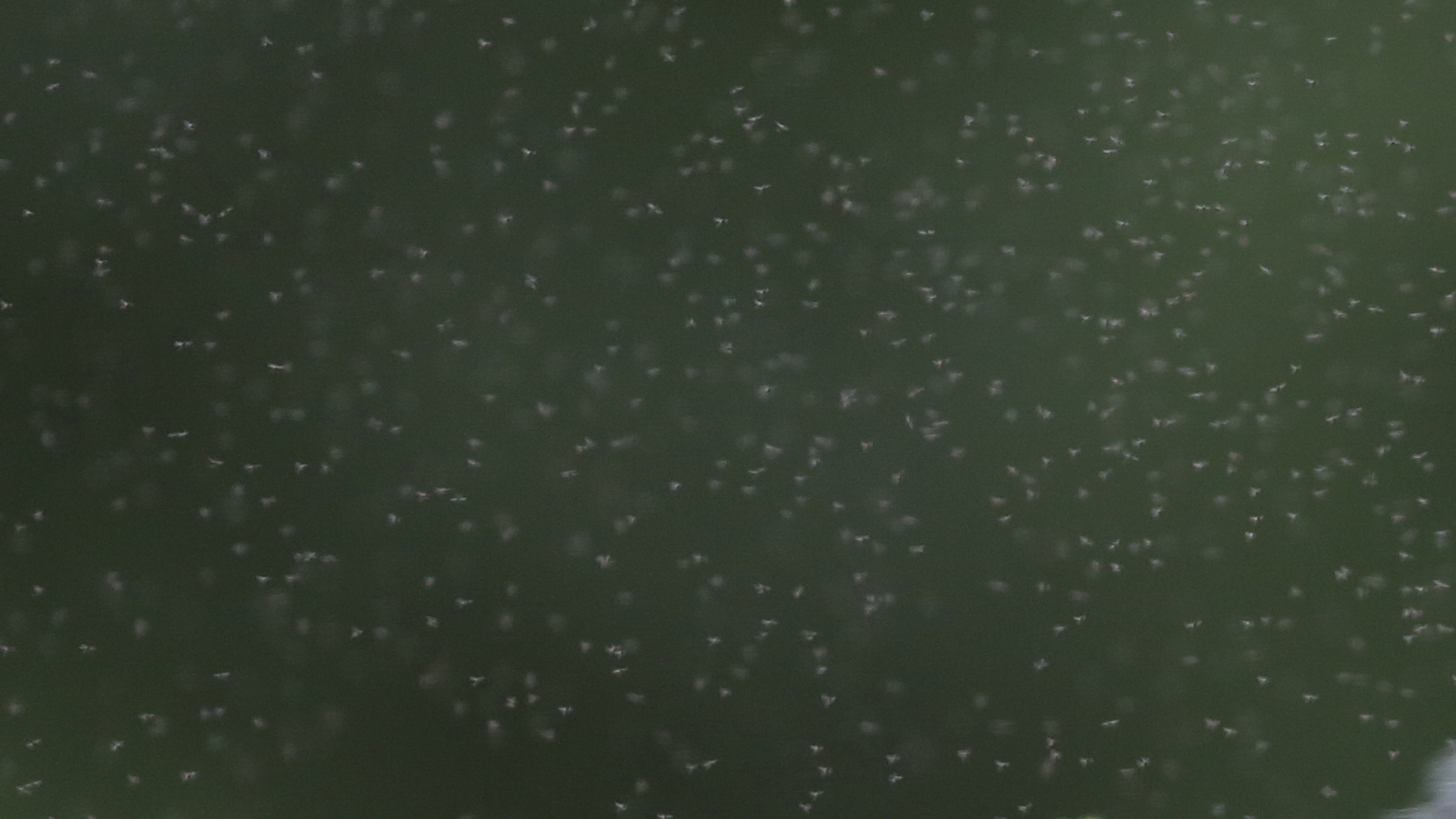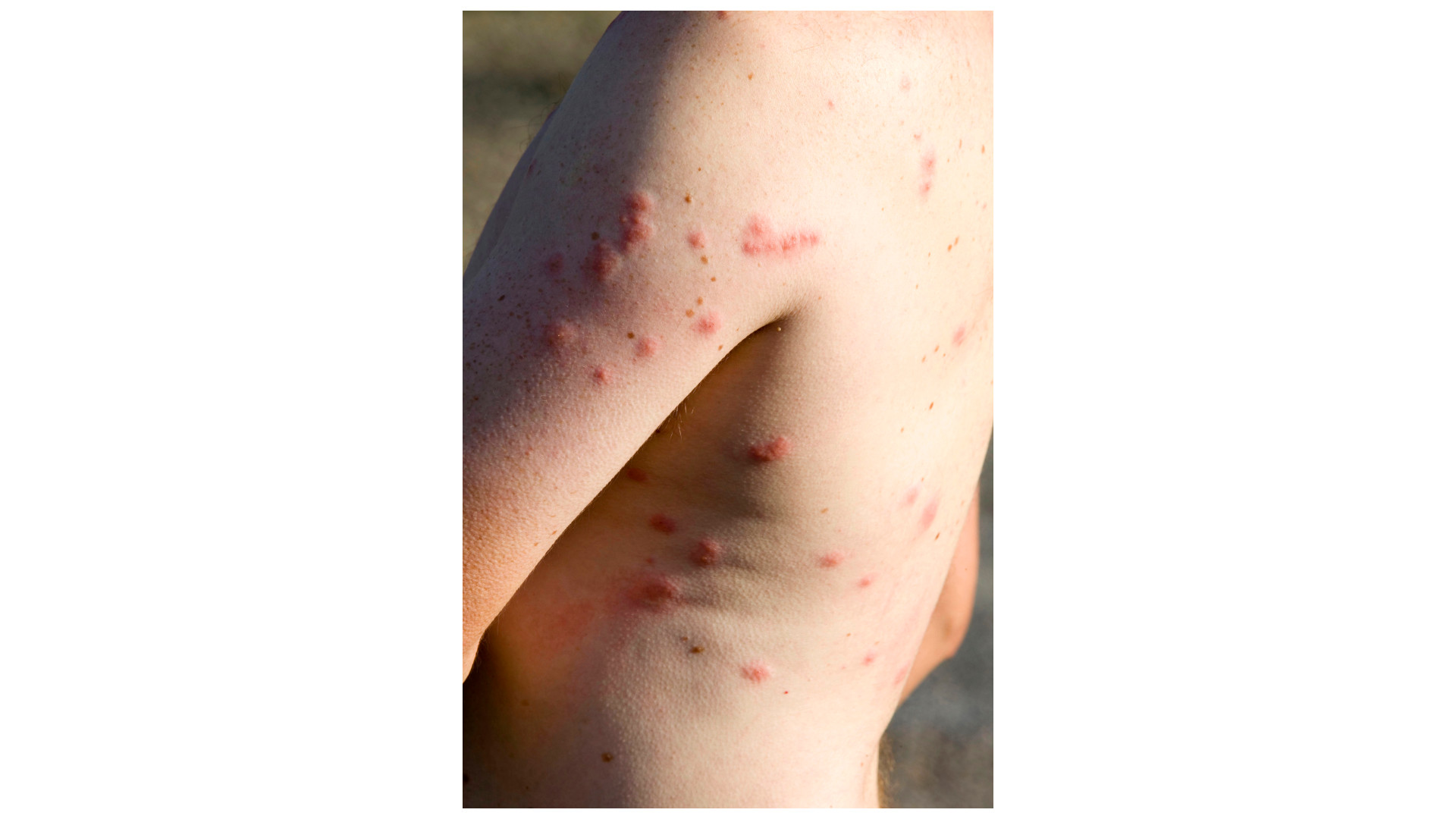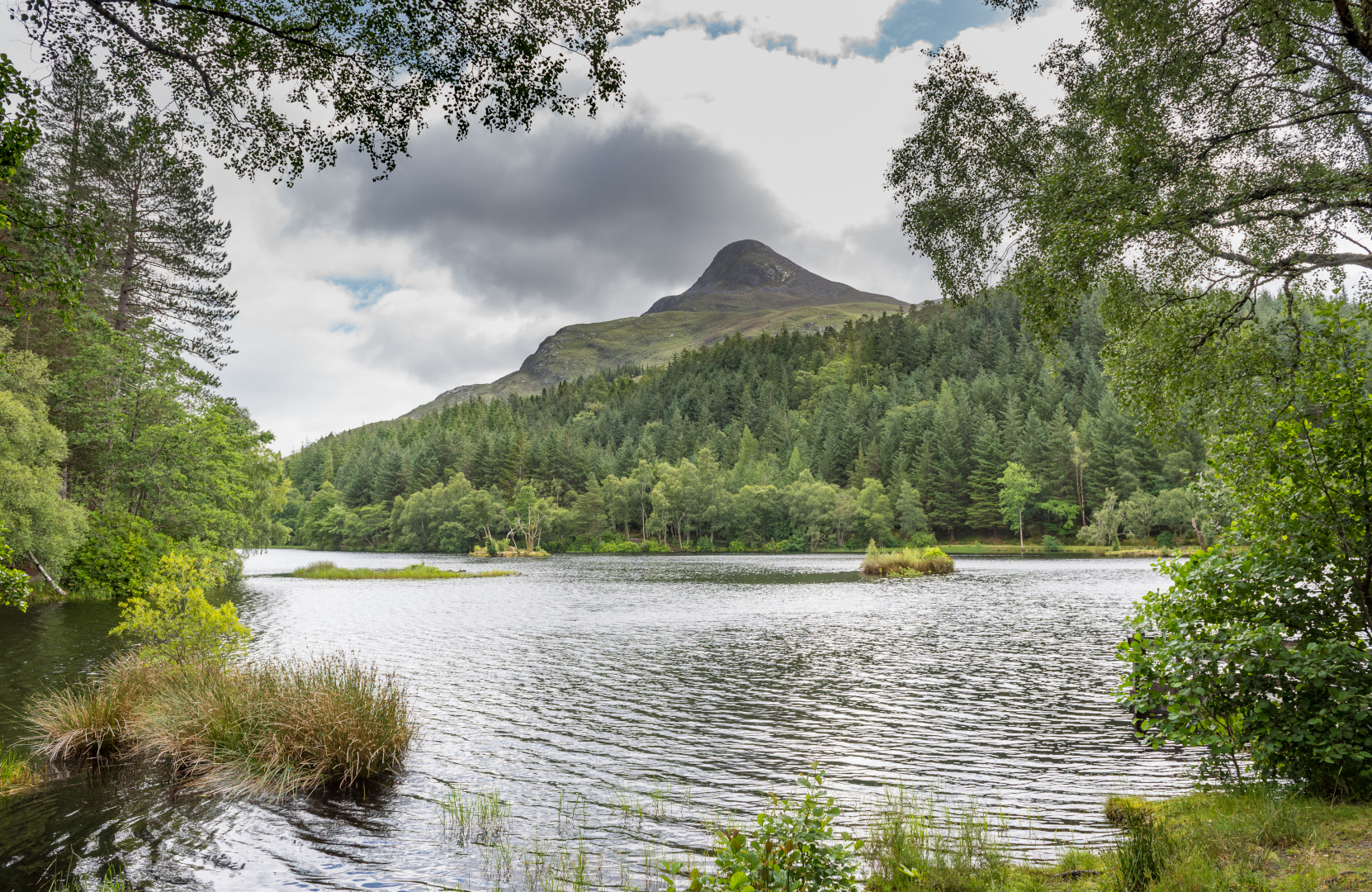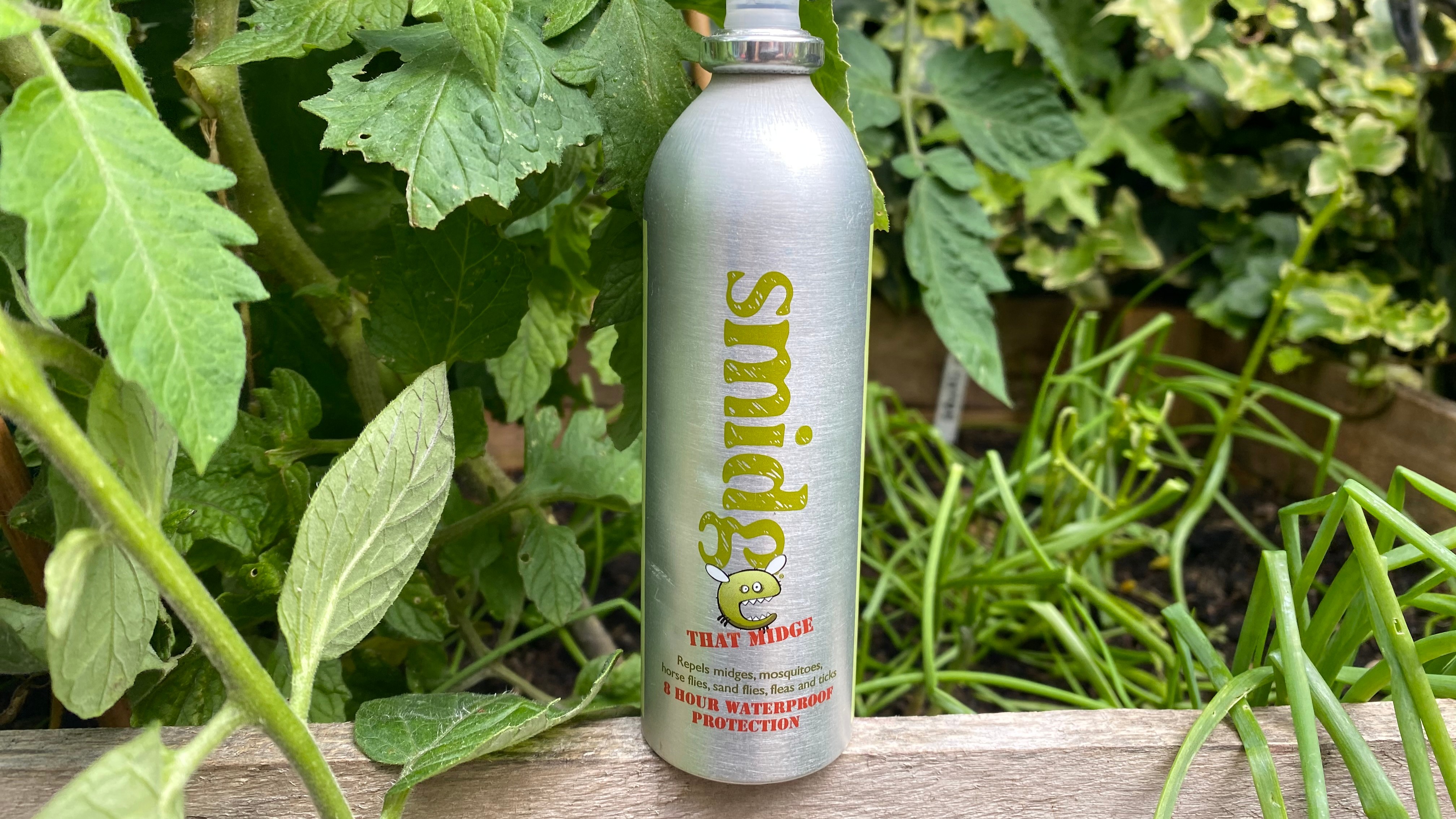How to stop midges biting: Plagued by the tiny nasties? Don't despair - we've got 16 top tips to keep the hated insects at bay
Our expert guide has all the advice you need to stay bite-free on your summer backcountry hikes and camping trips

- How to stop midges biting
- What are midges?
- Why are midges so annoying?
- Irritating after bites
- 1. Cover up
- 2. Use a head net
- 3. Avoid wet ground
- 4. Wind is your friend
- 5. Take cover at dusk and dawn
- 6. Pre-treat your tent
- 7. Avoid sheltered and shaded areas
- 8. Head high
- 9. Use the shoulder season
- 10. Use a repellent (or three)
- 11. Use diet supplements
- 12. Try traditional repellents
- 13. Electric insect repellers
- 14. Douse clothes in permethrin
- 15. Avoid using scented products
- 16. Dress in earthy colours
- How to treat midge bites
Summer is a joy for many outdoors enthusiasts with sunnier, longer days and the chance to spend more time hiking, trail running and camping. However, in some parts of the world, there are also some less welcoming features of summer – and this includes midges.
The tiny biting insects can be a major menace, especially in countries such as Scotland, north Wales, Scandinavia, other parts of Europe, as well as North America and Australia.
Midge bites affect people in different ways and can result in nasty itchy lumps on the skin. Even if you do not have a reaction to the bites, it's an unpleasant experience to find yourself under attack from a large swarm of the insects.
When you are planning summer camping vacations, hiking adventures, festival trips or just a barbecue on the beach, it's important to make sure you know how to protect yourself from the biting midge.
How to stop midges biting
We've got 16 useful tips on how to stop midges biting. Click the links or navigate further down the page for more detail.
- 1. Cover up – this is the simplest way to avoid being bitten
- 2. Use a head net – keep the nasties away from your face
- 3. Avoid wet ground – midges love moisture
- 4. Wind is your friend – midges prefer still, not windy, conditions
- 5. Take cover at dusk and dawn – this is when midges are most active
- 6. Pre-treat your tent – douse your tent with repellent
- 7. Avoid sheltered and shaded areas – this is where midges love to be
- 8. Aim high – midges tend not to survive above 750m
- 9. Use the shoulder season – midges don't like the cooler weather
- 10. Use a repellent (or three) – they'll reduce the number of bites you'll receive
- 11. Use diet supplements – certain substances seem to deter midges
- 12. Try traditional repellents – many natural repellents keep them at bay
- 13) Electric insect repellers – modern gadgets claim to see off midges
- 14. Douse clothes in permethrin – spray or wash it in
- 15. Avoid using scented products – they can alert the swarms to your presence
- 16. Dress in earthy colours – midges have poor eyesight
Meet the expert
What are midges?
- Midges are tiny biting flies
- They thrive in damp, moist and warm conditions
- There are some 4,000 species of midge worldwide
- A swarm of midges can inflict around 3,000 bites in an hour

Did you know that the midge is an umbrella term used to refer to any species of small biting fly – and this covers more than 4,000 species worldwide? The only places where midges are non-existent are deserts and permanently frigid zones, such as the Arctic and Antarctic.
In Britain alone, there are said to be 152 species of biting midge – and the most infamous of which is Culicoides impunctatus, aka the Highland midge.
All the latest inspiration, tips and guides to help you plan your next Advnture!
Midges are tiny little beasties, boasting a wingspan of a just 2mm. They hang about in swarms, which leads to a startling claim that midges can inflict in the region of 3,000 bites to the skin in an hour.
In addition, it’s estimated that the breeding grounds play host to 24 million midges per hectare.
Around a third of midge species feed on warm-blooded animals. Midges are attracted to humans through the scent of the carbon dioxide and lactic acid produced by our bodies.
Once midges have found their fodder, they emit pheromones that signal to other midges nearby that there is a feast to be had and this is why these tiny biters only ever seem to attack in swarms.
Why are midges so annoying?
Midges may be small but they are capable of driving even the hardiest outdoors fan absolutely bonkers. Midges swarm around your head, blur your sight, alight on any piece of bare skin they can find and, worst of all, they bite. They even penetrate the best tents and best insect repellents.
Midge bites can also cause irritating spots that itch for many days afterwards.
Irritating after bites
Midges have sharp mandibles that allow them to pierce through the hides of mammals – most commonly cattle, sheep, deer and, of course, humans.
When a midge bites, it takes around five minutes of feeding for the beast to become engorged and sated. The swelling and irritation their bites cause is a result of the histamines in their saliva, which increase blood flow to the area of the bite.
While some (lucky) people are left with only a red dot on the skin where a midge has feasted, other people suffer swollen bites that can be very itchy.

16 tips: how to keep the midges at bag
Cover up
One of the most effective ways to avoid being bitten my midges is to cover your skin. While not ideal in hot weather, a little overheating is a price most are willing to pay in return for itch-free, unbitten skin, and some of the best base layers out there are so breathable and lightweight that you shouldn’t feel too uncomfortable.
The problem is that you need to fully cover all skin and this means arms and legs, as well as hands, neck and face. Remember, too, to cover ankles with hiking socks or, better still, tuck long pants into socks because midges will find the tiniest bit of bare skin tasty.
Use a head net
Midge head nets are purpose-made to keep midges off your face and neck and away fro your hair. A head net is usually created with a fine mesh – such as the Smidge That Midge or the Lifesystems Midge Head Net ) – which keeps the tiny beasties out but still allows you to see (sort of).
The price you pay for wearing a head net is that you have only limited vision and they do not look very attractive. It's not easy to eat or drink when wearing a midge hair net, either.

Avoid wet ground
Midges thrive in moist and damp areas and especially where the ground is boggy and soggy – and where there is a natural water source.
Research suggests that the highest densities of midges are in areas that receive more than 49in (1250mm) of rain each year. Hence, it's areas that are wet and warm, such as in west coast Scotland, where midges are most frequently found.
Wind is your friend
Midges prefer dry and still days, so if you want to avoid swarms of the flying biters, choose a day or location when there is a breeze of wind.
If you are planning to camp, aim to pitch your tent in a more exposed spot and facing the wind. A wind speed of just 6 mph is said to be enough to keep midges at bay. If in doubt, check the midge forecast for your area.
Take cover at dusk and dawn
Midges do their hunting all day long, but usually ramp up feeding in the hour or so after sunrise and around sunset.
At these times of day, conditions are often at their calmest, so there is less chance of a breeze to see off the swarms.
Pre-treat your tent

Sadly, the mesh netting in most tents is often no foil for midges as they can squeeze through even seemingly minuscule gaps in the fabric. This will obviously make for an uncomfortable night in the tent.
To avoid this, you can douse your tent’s mesh panels with a repellent spray either before leaving home or as soon as you get to your chosen camp spot.
Avoid sheltered and shaded areas
Midges tend to favor secluded, shaded spots. When pitching your tent or taking a pit stop on a thru-hike, try to find a spot that’s more exposed so a breeze or wind keeps the flying beasties away
Head high
Midges aren’t fans of altitude, mainly because of lower temperatures and stronger winds. This usually means that heading above 750m / 2,500 ft should keep you safe, or at least keep your bite count to a more tolerable number.
However, be warned, that on a day where temperatures are high even on hilltops and the conditions are calm, the dreaded midges will seek you out.
Use the shoulder season
Midges become less active when temperatures fall below 50°F (10°C) and usually call off hostilities entirely when the mercury drops under the 37.5°F (3°C) mark. This, of course, makes spring and autumn the ideal time to get your hiking and camping in.
Use a repellent
Midge repellents are far from perfect – and most will only reduce the number of bites rather than stop them entirely – but it's far better than using nothing at all.
The best insect repellents we’ve tried include Smidge, picaridin, DEET and citronella. DEET is probably the most effective of the bunch, but because this can damage plastics and fabrics, take care to avoid getting them on your gear or tent.
Another popular repellent is Avon Skin So Soft Original Dry Oil, which some studies have shown to be 85% as effective against midges as DEET. It also smells a lot better.

Use diet supplements
Some ingestibles that have been touted as mitigators of midge bites over the years include yeast supplements, Marmite, vitamin B1 and vitamin B12, all of which make your skin less attractive to biting insects.
Try traditional repellents
Natural repellents that some campers and hikers swear by include citronella, oil of lemon eucalyptus, lavender, fennel, pennyroyal, mugwort and even pomegranate skins. Smoke from a campfire can also keep the biters at bay.
Electric insect repellers
Some campers swear by modern gadgets, such as portable eclectric insect repellers, to see off midges. There are different types, including lanterns and Thermacell devices.
Douse clothes in permethrin
Permethrin is an insecticide that can be applied to clothing using either a spray or wash-in treatment. Several studies have revealed permethrin to be a highly effective insect repellent, most notably an Alaskan study in which it was shown to have stopped 73% of bites.
Avoid using scented products
Deodorants, perfume, aftershave and fabric softeners are just a few scented items that may alert midges to your presence and put you top of their breakfast/lunch/time menu.
Dress in earthy colours
Midges do not have great eyesight, which means they are less able to spot clothing that blends in with the terrain. This means it’s recommended that you save your brightly coloured hiking clothes, including waterproof jackets and windbreakers, for autumn, winter and spring, and do your summer hiking in more muted tones.

How to treat midge bites
- Apply hydrocortisone or antihistamine cream around the bite area
- Natural remedies include ammonia, tea tree oil, calamine lotion and aloe vera
- Use an electronic bite relief device
- Avoid scratching the bite
No matter how well you try to protect yourself against them, getting at least a few bites when hiking or camping in midge country is an inevitability. While most people will heal quickly, for others the immune response may be worse and bites can feel itchy or remain inflamed for several days.
If your bites are itchy or cause swelling, there are different methods to ease the itch. These include applying hydrocortisone or antihistamine cream around the bite area.
If this doesn't help, you can also use an oral antihistamine to ease the itching. As with any medication, always read the label to make sure it's safe for you to use if you have any pre-existing medical conditions. If you prefer a more natural remedy, some treatments that might do the trick include ammonia, tea tree oil, calamine lotion and aloe vera.
More modern gadgets include battery powered devices that provide a small dose of heat, which helps to eliminate the itch for a while. A heat pen such as Bite Away can work a teat.
Avoid scratching the bite, as this can spread the bacteria causing the infection and will increase the release of histamine in the wound, which only makes them even itchier.
Former Advnture editor Kieran is a climber, mountaineer, and author who divides his time between the Italian Alps, the US, and his native Scotland.
He has climbed a handful of 6000ers in the Himalayas, 4000ers in the Alps, 14ers in the US, and loves nothing more than a good long-distance wander in the wilderness. He climbs when he should be writing, writes when he should be sleeping, has fun always.
Kieran is the author of 'Climbing the Walls', an exploration of the mental health benefits of climbing, mountaineering, and the great outdoors.

